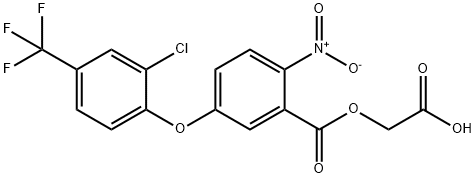A4003712
1-Ethynyl-1-cyclohexanol , 98% , 78-27-3
Synonym(s):
1-Ethynylcyclohexanol
CAS NO.:78-27-3
Empirical Formula: C8H12O
Molecular Weight: 124.18
MDL number: MFCD00003858
EINECS: 201-100-9
| Pack Size | Price | Stock | Quantity |
| 100G | RMB94.40 | In Stock |
|
| 500G | RMB383.20 | In Stock |
|
| 2.5KG | RMB1743.20 | In Stock |
|
| others | Enquire |
Update time: 2022-07-08
PRODUCT Properties
| Melting point: | 30-33 °C(lit.) |
| Boiling point: | 180 °C(lit.) |
| Density | 0.967 g/mL at 25 °C(lit.) |
| vapor pressure | <1 mm Hg ( 20 °C) |
| refractive index | 1.481-1.484 |
| Flash point: | 163 °F |
| storage temp. | Store below +30°C. |
| solubility | 10 g/L (20°C) |
| form | Liquid After Melting |
| pka | 13.34±0.20(Predicted) |
| color | Clear colorless to light yellow |
| PH | 7 (1g/l, H2O, 20℃) |
| explosive limit | 1.3-8.7%(V) |
| Water Solubility | 10 g/L (20 ºC) |
| BRN | 471404 |
| InChIKey | QYLFHLNFIHBCPR-UHFFFAOYSA-N |
| LogP | 1.49 at 25℃ |
| CAS DataBase Reference | 78-27-3(CAS DataBase Reference) |
| NIST Chemistry Reference | Cyclohexanol, 1-ethynyl-(78-27-3) |
| EPA Substance Registry System | Cyclohexanol, 1-ethynyl- (78-27-3) |
Description and Uses
1-Ethynyl-1-cyclohexanol (ECHO) can undergo acetylation in the presence of a catalytic amount of ruthenium chloride at room temperature. It can be used to synthesize novel organotellurium(IV) compounds with potent inhibitory activity towards Cathepsin B. The polymerization of ECHO by transition metal catalysts leads to the formation of poly(ECHO). It can also react with transition metal hydride complexes to form vinyl derivatives by inserting into the M-H bonds.
Safety
| Symbol(GHS) |  GHS06 |
| Signal word | Danger |
| Hazard statements | H302-H311-H315-H319 |
| Precautionary statements | P264-P270-P280-P301+P312-P302+P352+P312-P305+P351+P338 |
| Hazard Codes | Xn,Xi |
| Risk Statements | 21/22-36-36/37/38-20/21/22-36/38 |
| Safety Statements | 36/37-36/37/39-26-36-22 |
| RIDADR | UN 2811 6.1/PG 3 |
| WGK Germany | 1 |
| RTECS | GV9100000 |
| Autoignition Temperature | 365 °C |
| TSCA | Yes |
| HazardClass | 6.1 |
| PackingGroup | III |
| HS Code | 29061900 |
| Toxicity | LD50 orally in Rabbit: 583 mg/kg LD50 dermal Rabbit 973 mg/kg |




